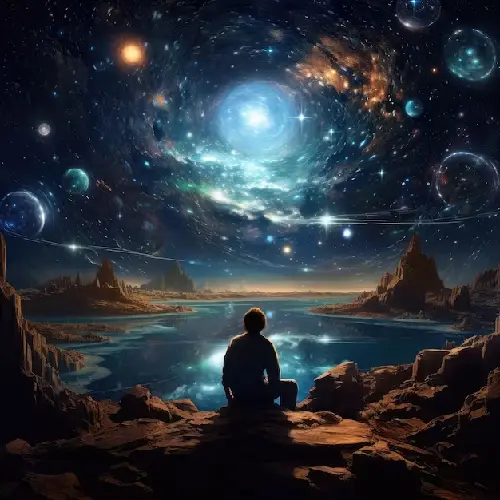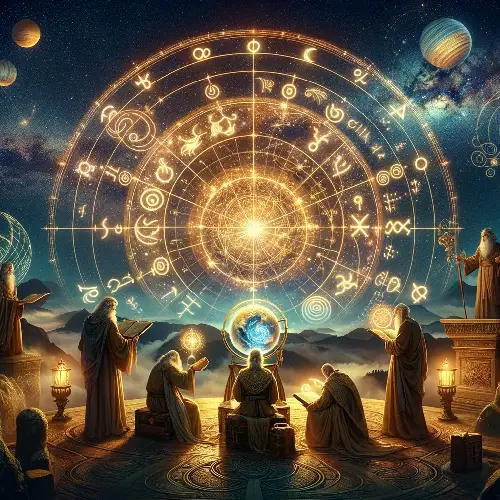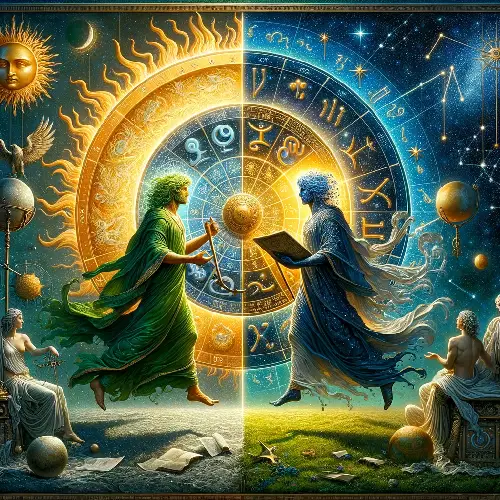The Importance of the Moon’s Nodes: Rahu and Ketu in Vedic Astrology
Introduction
In the celestial theatre of Vedic Astrology, Rahu and Ketu, collectively known as the Moon’s Nodes, play a pivotal role. These shadow planets, not physical entities but mathematical points in the sky, are ever-present, casting profound influences on human lives. Originating from Hindu mythology, their story is deeply ingrained in the spiritual fabric of Vedic astrology, representing the eternal battle between desire and liberation, materialism and spirituality.
Mythological Significance
The mythological origin of Rahu and Ketu stems from the story of the churning of the ocean, a cosmic event narrated in ancient Hindu scriptures. During this event, the demons and gods churned the ocean to obtain the nectar of immortality. Rahu, then a demon, deceitfully consumed some of the nectar. The Sun and Moon, noticing this deceit, informed Lord Vishnu, who then beheaded the demon. This resulted in the immortal head being known as Rahu, and the body, which continued to exist, became Ketu. This mythological narrative forms the basis of the eternal shadow play these nodes cast on the human psyche and worldly events.
Astronomical Perspective
Astronomically, Rahu and Ketu are the points where the Moon’s orbit intersects the ecliptic, the apparent path of the Sun around the Earth. Rahu represents the North Node, where the Moon crosses the ecliptic going northward, while Ketu signifies the South Node, where it crosses going southward.
Rahu: The North Node
Rahu, often depicted as a dragon’s head, is associated with materialism, desires, and worldly pleasures. It signifies:
- Ambition and Desire: It fuels ambition and the desire for material growth. It can lead individuals to seek wealth, power, and status.
- Innovation and Change: Being a catalyst for change, Rahu brings innovative and unconventional approaches to traditional systems.
- Foreign Connections: Rahu is also linked to foreign lands and can indicate travels or connections with foreign cultures.
- Obsessions and Addictions: It can cause obsessions or addictions, as it represents an insatiable desire for worldly pleasures.
Ketu: The South Node (True Node)
Ketu, represented as a dragon’s tail, is the harbinger of spirituality and liberation. It embodies:
- Spirituality and Moksha: Ketu drives individuals towards spirituality and the quest for liberation (Moksha) from the cycle of birth and rebirth.
- Detachment: It promotes detachment from materialistic desires and encourages a deeper understanding of life’s true purpose.
- Mysterious Experiences: It is often associated with mystical experiences, deep insights, and psychic abilities.
- Losses and Letting Go: Ketu can sometimes bring losses and separations as a way to foster spiritual growth and detachment.
Interplay in Natal Chart
In a natal chart, the houses and signs they occupy, along with their aspects and conjunctions, reveal the karmic lessons that an individual needs to learn in this lifetime. Their dasha periods bring significant transformations and shifts, aligning individuals with their destined path.
Note:
The Moon’s Nodes, Rahu and Ketu, are potent forces in Vedic astrology, steering individuals towards their destiny, balancing the scales of materialism and spirituality. They play an instrumental role in shaping the life path, revealing the areas of life where one would face challenges and transformations. A deep understanding of their influence can offer profound insights into the karmic patterns influencing one’s life, guiding towards a path of harmony, wisdom, and ultimate liberation.
Understanding their influence in one’s natal chart can be a key to unlocking the deeper layers of one’s personality and potential, guiding towards a fulfilling and purposeful life journey.


